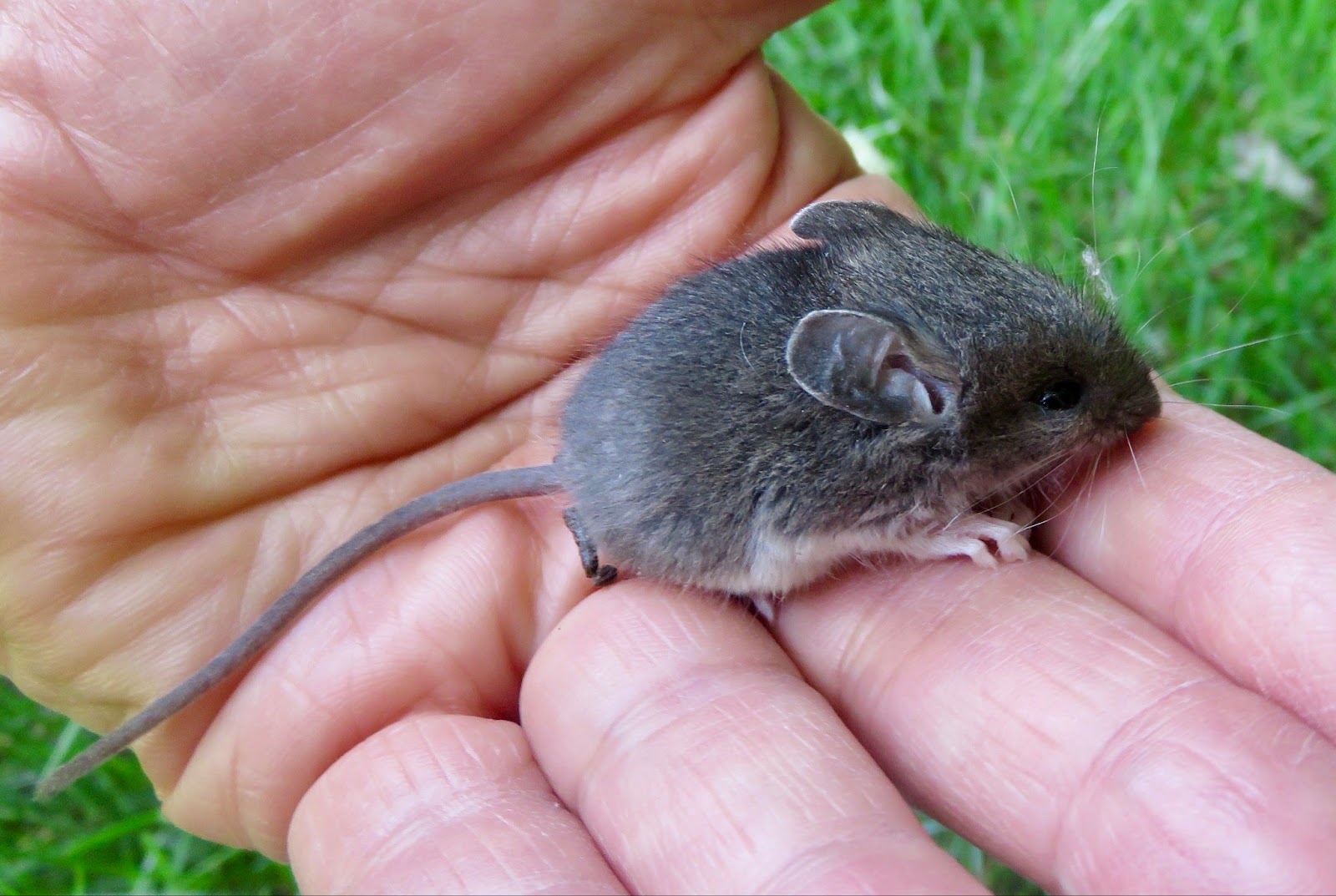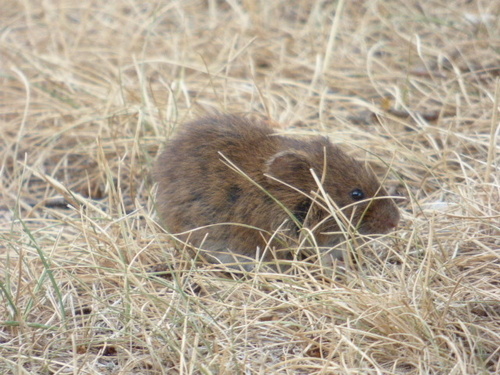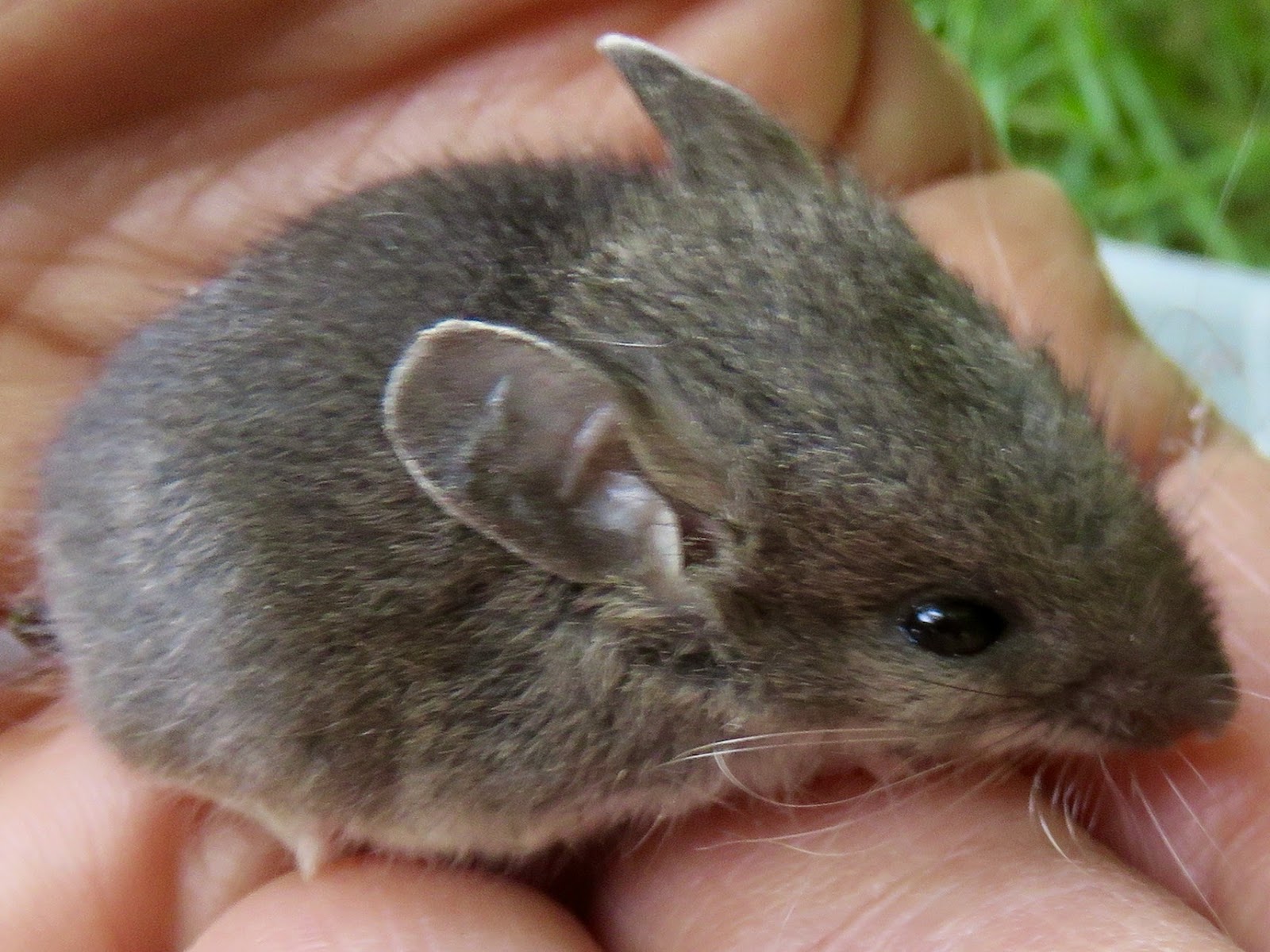The library welcomes everyone; well, almost everyone. Last week, I escorted a young visitor to the door . . . and a little beyond. This individual was certainly charming and, for all I know, well-mannered, but the relationship just wasn’t “a good fit.” I hope it will settle down in the nearby brush and woods.

White-footed Mouse, Easton, August 3, 2023
The Ames Free Library attracts its fair share of non-human visitors: pet dogs trying to be patient as their humans select books; an occasional frog, bat, or cat; and lots of invertebrates including wasps, flies, spiders, and crickets. The most predictable visitors are small rodents. Each autumn, my mouse-catching skills are called into action as I capture the critters before a trap does. I managed to outwit and overpower this frightened youngster – bare handed!
Some visitors are meadow voles, a species that The Smithsonian Book of North American Mammals calls “the most prolific mammal on earth.” As I am unable to find a labeled photo in my own collection, here’s an image via iNaturalist.

(c) vzollo, some rights reserved (CC BY-NC)
Although people refer to all small rodents as “mice,” there are some clear physical differences between a meadow vole and our white-footed mouse. Voles are stocky, with small eyes and ears, and shorter tails. They look rounder, more compact. An adult white-footed mouse will have a pointy face, prominent eyes and ears, a proportionately long tail, and an overall lankiness. These differences are less obvious with our juvenile mouse, who retains some of its baby features.
The two species also move differently. The meadow vole, which has shorter legs, mostly trots through tunnels and tall grasses. In contrast, white-footed mice often bound: as they jump, their back feet land ahead of their forefeet, much like a squirrel or a rabbit. The mice can also climb up vegetation.
The white-footed mouse is an adaptable species that can thrive in a variety of habitats. In the eastern US, it is abundant in mixed coniferous/deciduous forests where it consumes a broad range of foods including seeds, insects, nuts, and fruit. It also shares the meadow vole’s prolific reproduction, if not quite to the same degree. White-footed mice, who reach sexual maturity at a young age, can rear several litters of pups per year. These mice must produce many offspring to offset the heavy predation of snakes, owls, weasels, red foxes, and other hungry animals. According to the Smithsonian guide, “There is an almost complete replacement of a population each year.” A high rate of mouse reproduction helps sustain the diversity of forest wildlife.
White-footed mice initiate other ecological impacts through their food choices. By selecting particular seeds to eat or to cache, the mice affect which tree species will germinate and thrive, and which species will be retarded. Similarly, mice impact forest health by ingesting and excreting fungal spores, particularly mycorrhizal fungi that form associations with tree roots, thereby increasing their access to nutrients.
Just think, our little mouse and its relatives can shape the forests around us. I wonder how it is faring . . . Why was a nocturnal animal wandering in daylight? Was it too young to be independent? Was it exploring new territory in the library building or returning home? I might see it again, for the Animal Diversity Web tells us that white-footed mice have “keen homing instincts. In one study, captured individuals returned to the site of their capture after being released 2 miles away.” I might be seeing this face again soon.
